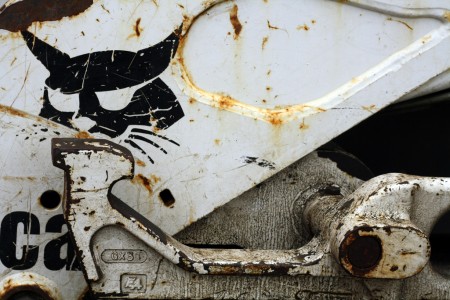
After the collapse of the Soviet Union, Ken Alibek – a formerly high ranking official within the Russian biological weapons program – defected to the United States. His 1999 book can be seen as a declassified, commercial, civilian version of what he told the American intelligence officials who he initially debriefed. Biohazard: The Chilling True Story of the Largest Biological Weapons Program in the World focuses on the facilities of Biopreparat: an ostensibly civilian organization that was actually the major developer and stockpiler of biological weapons. They made anthrax and smallpox by the tonne, and developed mechanisms for deploying these agents ranging from assassination-type mechanisms to delivery via intercontinental ballistic missile.
Alibek makes a number of serious allegations:
- Russia developed biological weapons as far back as 1928, when work was done on weaponizing typhus;
- That Russia violated the Biological Weapons Convention from the start;
- That biological agents like plague and smallpox were genetically modified to be resistant to treatments and vaccines, to be more virulent, and to produce additional toxins;
- That Russia continued to develop and stockpile biological weapons after the Cold War ended;
- And that Russia used biological weapons, both against the Germans during WWII and against the Afghans during the Soviet invasion. In the first case, an attack on German Panzer troops ultimately ended up sickening far more Russian civilians than enemy soldiers.
Alibek’s book also provides considerable insight into the character of the Soviet system of government, including military and security matters. His perspective as an insider in the system is one of the most interesting aspects of the book, including his account of American inspections of Biopreparat facilities (and how he helped to trick them) and the Soviet inspections of US facilities like Fort Detrick that followed.
The book does have some flaws. As with any document on sensitive security matters, it is impossible to know how much of what is claimed is really accurate. Furthermore, this is the work of a defector, and Alibek goes to some length to try to highlight the good things he did. For example, he talks about trying to divert more of the production of a facility he ended up directing towards civilian medical purposes. He also omits any mention of the ‘Alibek’ strain of anthrax that he was responsible for developing. The book also jumps around chronologically in a way that can be confusing, and the chapter titles do not provide a very good sense of the content.
All told, Alibek’s book is interesting and worthwhile to read. It highlights how, alongside all the nuclear dangers of the Cold War, there was another separate type of appalling risk to civilian populations that had been created, and for which the legacy is enduring. Indeed, proliferation of biological weapons may well be a far more serious matter than proliferation of nuclear weapons. Building a working atomic bomb requires fissile material, knowledge, and engineering capability. By contrast, a biological weapon smuggled out of a lab in the pocket of an underpaid Soviet scientist can be duplicated to mass quantity in fermentors, with relatively little technological sophistication required.
That being said, it is worth nothing how biological weapons haven’t yet seemed to live up to their frightening potential. Alibek mentions the Japanese Aum cult as an example of a non-state entity that developed biological capabilities, and yet their attempts to actually employ biological agents failed to produce significant damage. That said, weapons in the hands of states like Russia that have had sophisticated weaponization and testing programs for decades are likely much more dangerous, as all the deaths from the accidental Sverdlovsk anthrax leak illustrate.
The book talks very little about delivery systems for biological agents; quite possibly, that is in response to the particular sensitivity of such information, which may not yet be in the hands of groups that do have access to dangerous strains of bacteria and viruses. Alibek explains that:
Bioweapons are not rocket launchers. They cannot be loaded and fired. The most virulent culture in a test tube is useless as an offensive weapon until it has been put through a process that gives it stability and predictability. The manufacturing technique is, in a sense, the real weapon, and it is harder to develop than individual agents. (p.97 paperback)
He goes on to explain that detailed recipes for the production and weaponization of biological agents were developed by Biopreparat, and that they were retained by the Russian government even after the collapse of communism. In a few months time, facilities re-purposed for civilian use could go back to making smallpox, anthrax, and plague by the tonne.
In light of the increasing authoritarianism of the Russian government, this book makes especially worrisome reading. Back in the Soviet era, the government blamed the Sverdlovsk anthrax outbreak on ‘contaminated meat.’ Black market vendors were even punished for their supposed role in causing the disaster. For a span after the fall of communism, the reality that it arose from a leak in a bioweapon production plant was acknowledged. More recently, the government has gone back to the old contaminated meat deception.





